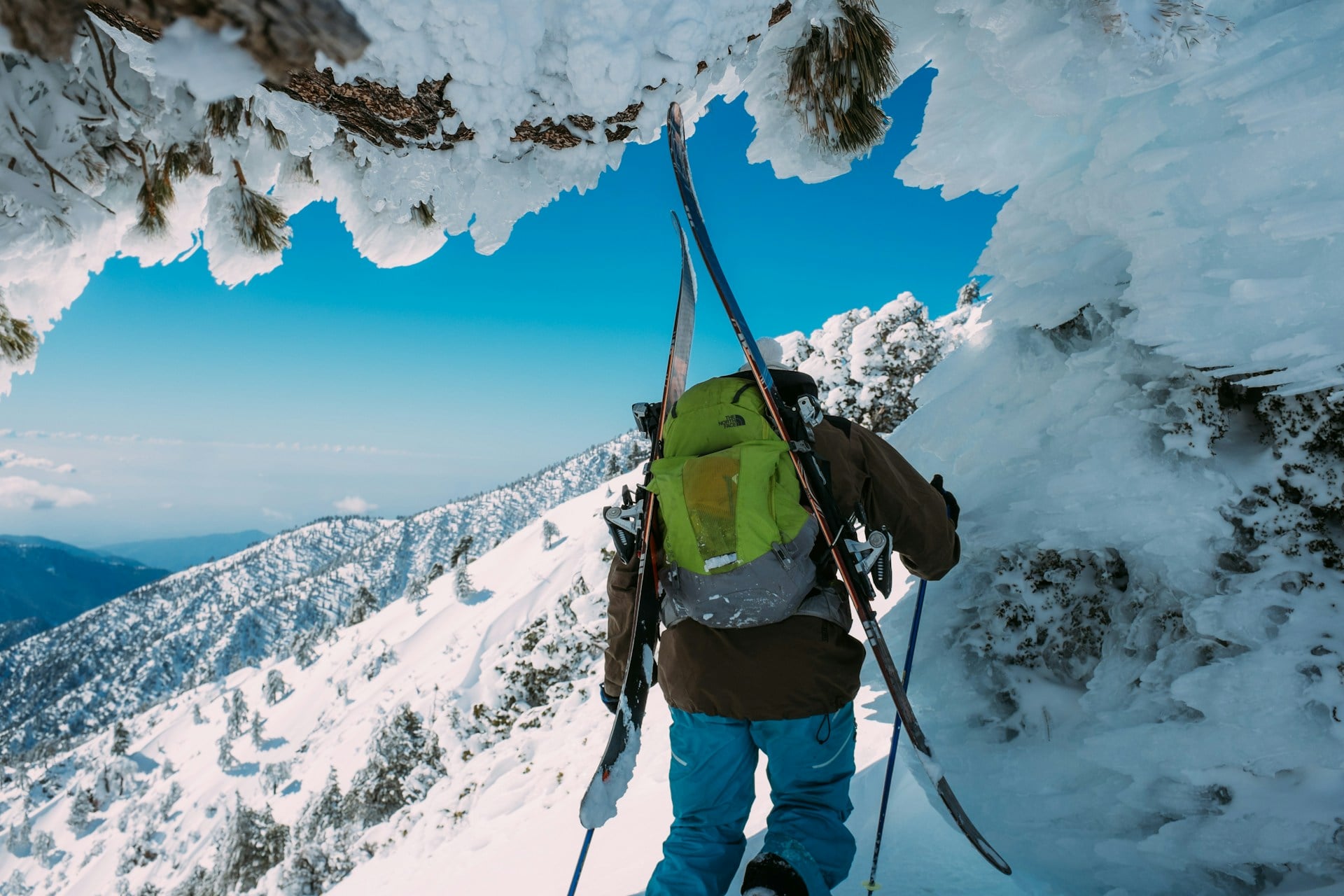During spring, summer and fall, alpine terrain becomes vastly more accessible to climbing, hiking, skiing and mountaineering. Warmer temperatures and lower avalanche danger create great conditions for pursuing a myriad of outdoor objectives. However, even in warmer months the mountains still pose considerable dangers in terms of weather. From thunderstorms to downpours, hail, and snow, exposure to the elements must be minimized as much as possible when in the mountains.
Hardshell jackets serve as the main line of defense against moisture and wind; however not all hardshells are not created equal. Some styles sacrifice weather protection for breathability, while others offer superior protection at the cost of feeling like you are trapped in a sauna. When choosing a jacket for summer alpine outings, it is necessary to choose a high performing option – one that offers a balance of features like waterproofing weight, and breathability. Below we cover some of those important features so that you can focus on picking the perfect hardshell for your summer alpine adventures.
Breathability:
Breathability refers to a jacket’s ability to keep out moisture while still allowing excess body heat and condensation to escape from the inside. Every hardshell “breathes” differently and some accomplish this job better than others.
Historically the better a jacket is at keeping moisture out, the worse it is at letting moisture, or sweat, escape the inside. Similarly, a jacket with high breathability may struggle to keep large amounts of water out and thus not ideal for potentially heavy spring rains. With the improvement of materials, this crux is decreasing in severity. This balance between breathability and waterproofing is one of the most crucial points to consider when choosing a jacket. Some jackets balance breathability with weather protection better than others.
When deciding how breathable you need your jacket to be, it is important to consider two things: How active will you be while wearing the jacket and what kind of weather will you be in while wearing it. For summer objectives like climbing and mountaineering, where constant movement means more heat and sweating, breathability may be more important. Early spring or late fall objectives, which could include heavy wet snow and cold conditions, might call for a more weatherproof jacket with an added feature like pit vents.
Weather Protection:
When it comes to all around weather protection one brand is typically the topic of discussion; Goretex. Goretex specializes in waterproof liners for a plethora of outdoor clothing. You can find Goretex waterproofing in hardshell jackets and pants, gloves, footwear and even hats! They partner with many companies including Arc’teryx, Marmot, Patagonia, Rab and many others to help create top of the line water and weatherproof clothing and gear.
The best performing equipment I have ever owned, in terms of weather protection, has always had a Goretex layer. That said, many companies have their own patented waterproof layer technology, like Patagonia’s “H2NO” and Columbia’s “Omni-Tech”, that provide protection against the elements. Albeit, I prefer GoreTex for the longevity of the material – it holds up to the test of time like no other.
In addition to the waterproof lining of a hardshell, the coating on the outside of the jacket can be crucial to keeping out water as well. A lot of outdoor products, including hardshells, have a DWR, durable water repellent, finish on their outermost layer. A DWR coating allows water to bead off the jacket and prevents pooling in a single area. It is important to note that DWR coatings slowly wear off over time, especially if you wash your jacket frequently. To maintain effectiveness, DWR coatings should be reapplied every so often. A REI guide on reapplying DWR coatings be found here: https://www.rei.com/learn/expert-advice/rainwear-dwr.html
Features to Look Out For:
Hardshell jackets come with a variety of features depending on designated use. The features outlined below are important to consider as well – especially if your interests lie in more technical objectives. Always choose the hardshell jacket with the features that best suit your needs.
Pit Vents:
Pit vents are a fantastic feature in many heavier, more weatherproof, jackets. Vents allow jackets to be breathable without sacrificing protection. Pit vents are located in the underarm of a jacket and typically run down the sides from armpit to rib. The vent zippers are strategically placed to allow heat to escape from one of the warmest areas on the body, helping to let out vapor and prevent excess moisture inside the jacket. Pit vents range in size, some measuring over a foot long, with longer openings allowing more moisture and body heat to escape.
Cinches:
Cinch points or draw strings allow one to tighten or loosen specific parts of a garment. This adjustment helps accommodate additional layers and can prevent the seeping in of unwanted moisture. The cinch points of shell jackets are common at the waist, cuffs, and hood of a jacket. When I am in the market for a new hardshell jacket, I typically look for cinches in all three areas because I prefer the better micro adjustments they allow when weather shifts.
Helmet Compatibility:
Many hardshell jackets intended for skiing or climbing have a helmet compatible hood. This is a hood specifically designed to fit over a skiing or climbing helmet and are typically more rounded. Hoods with this feature create more secure head protection from inclement weather and additional comfort for all day wear. Helmet compatible hoods typically also include cinches to adjust the hood when not being used over a helmet.
Pockets:
There are three main types of pockets found on a hardshell jacket: hand, chest, and inner pockets.
Hand pockets are nice if you plan on spending large amounts of time walking or sitting where you don’t need to use your hands. It is important to note that if you are wearing any type of backpack with a hip belt, that belt will most likely make the pockets inaccessible or difficult to use.
Inner pockets are great for storing small items that you don’t want to get wet but still want access to without having to go into your backpack.
Some ultralight hardshells, like the Z-Pack Vertice and Arc’teryx Norvan SL, forego all pockets except for a chest pocket that doubles as the jackets compression sack.
Keep in mind that the more pockets your jacket has the heavier it is going to be. Hardshell pockets often include zippers to keep moisture out but additional zippers and fabric can quickly add ounces of jacket weight. Those looking for an ultralight shell will be hard pressed to find one under 8 ounces with more than one pocket.
Some of Our Favorite Shells:
Listed below are a few of the hardshell jackets trusted by our guides. Always diligently research any product before you purchase it and make sure that it best fits your needs. Many more excellent options exist out there, so take what you’ve learned, go on the hunt for the right fit for your needs, and get out there and play hard!


